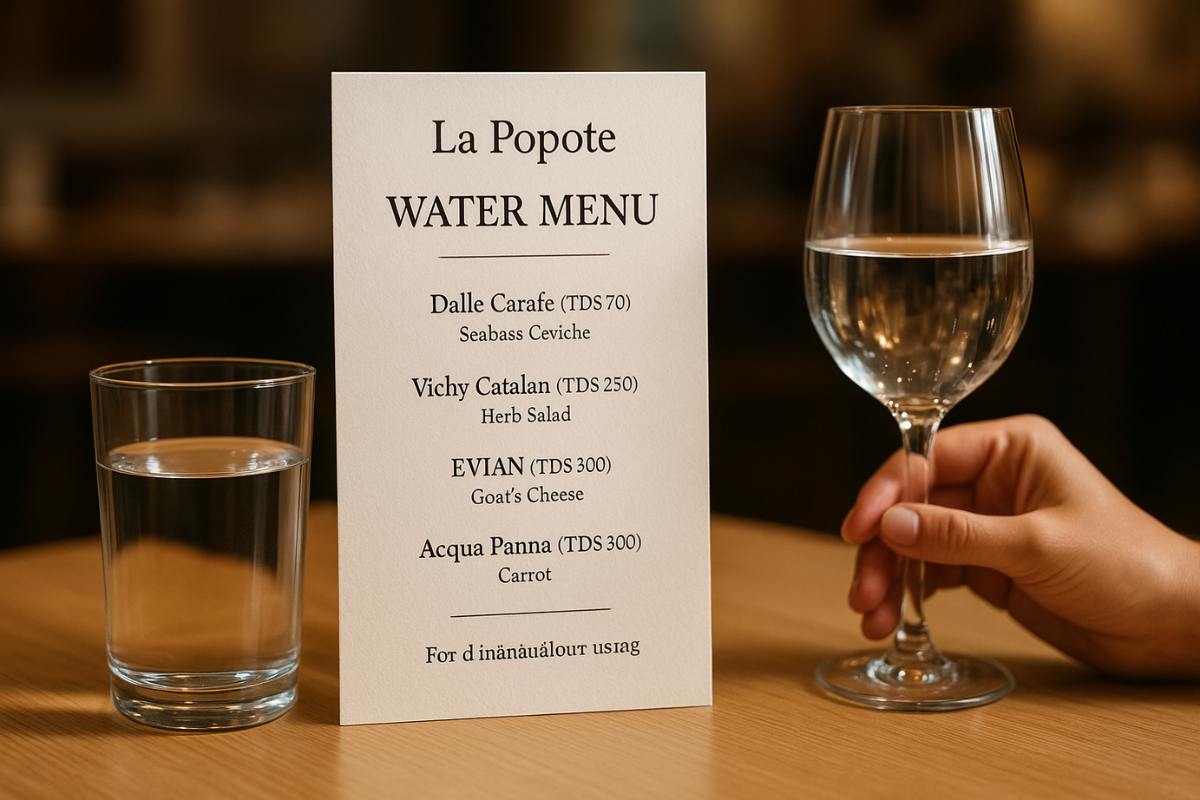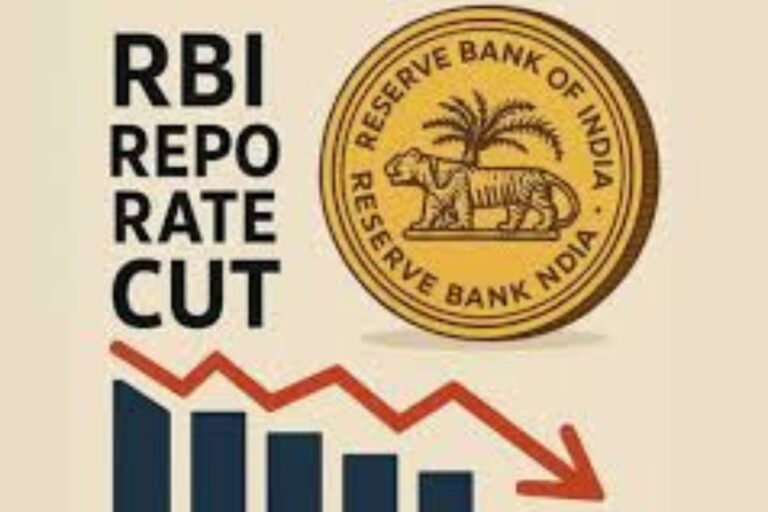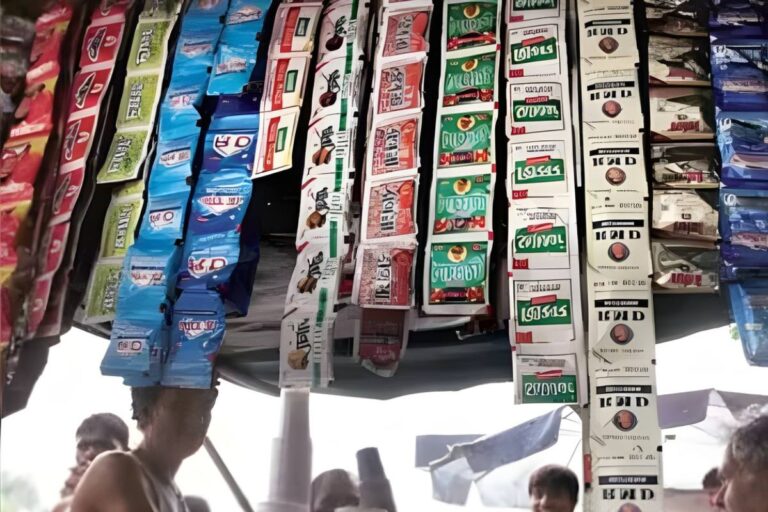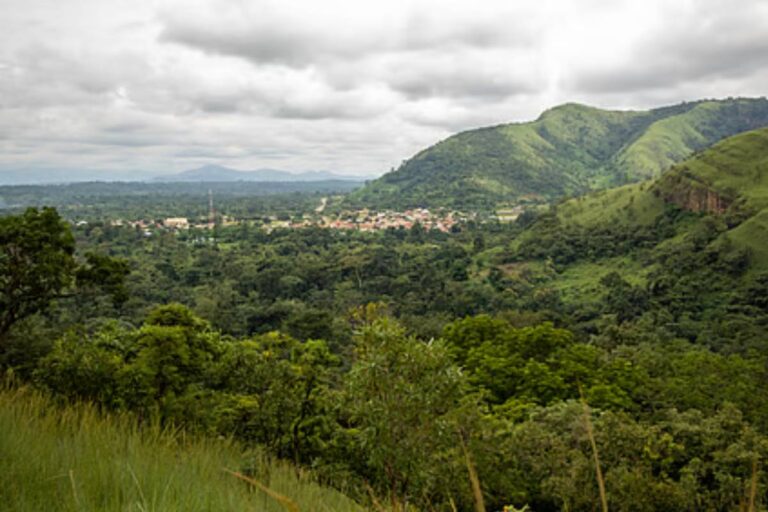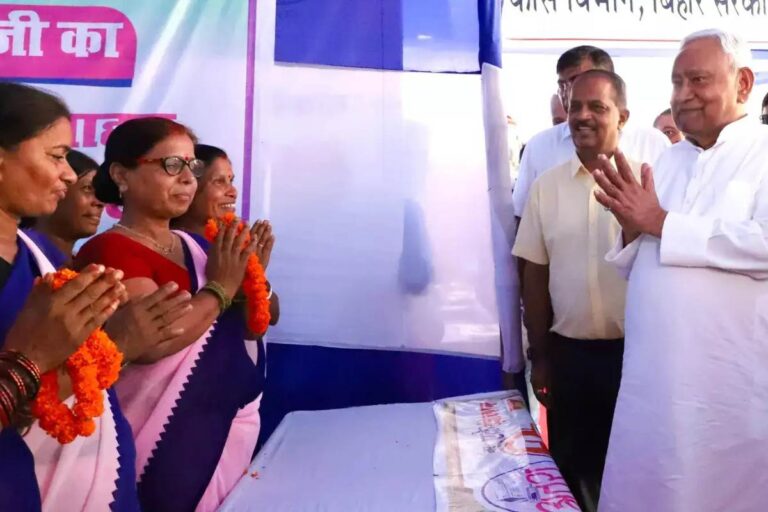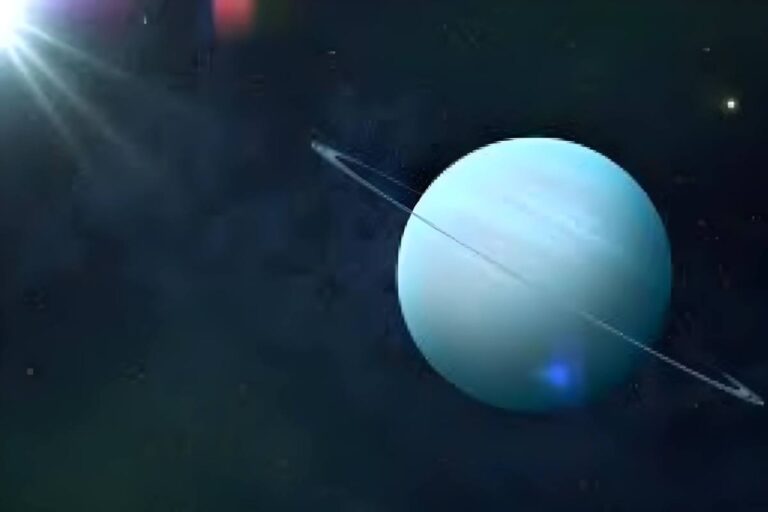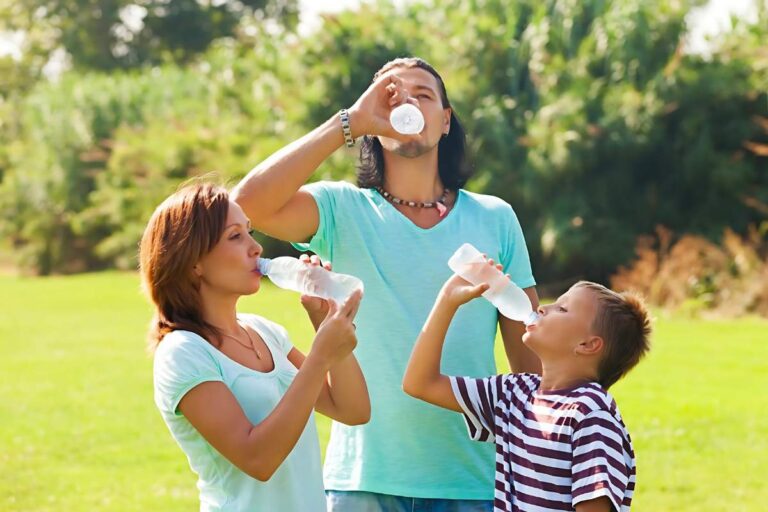A French-inspired dining room in Cheshire introduces a curated “water list” for non-drinkers, reflecting a wider shift toward low- and no-alcohol choices
La Popote, a French-style restaurant in Cheshire, northern England, is rolling out what it describes as the UK’s first full bottled water menu offering uncommon varieties intended to serve guests who prefer not to drink alcohol while still wanting a thoughtful pairing with food. The Michelin Guide-recognized venue, known for an extensive wine list of nearly 140 selections, will now provide a choice of three still waters and four sparkling waters alongside complimentary tap water, starting Friday. Prices range from about £5 for a large bottle of Crag Spring Water to around £19 for Portugal’s The Palace Vidago sparkling water, according to descriptions of the new list and local reporting based on the CNN story.
Here’s the kicker: the menu wasn’t dreamed up overnight. It was curated by Doran Binder, a certified water sommelier (Fine Water Academy) and owner of the British brand Crag Spring Water, who first pitched the concept to La Popote’s co-founders three years ago. At first, the team brushed it off. Then they did a tasting. And another. The experience sampling waters with specific foods like cheeses, chocolate, Parma ham, and olives shifted perceptions, they say, by revealing how water’s mineral content can subtly change flavor perception, much like wine pairings do.
Key Takeaways
- La Popote in Cheshire is launching what it says is the UK’s first bottled water menu, with three still and four sparkling options, plus free tap water.
- The list spotlights European waters from the UK, France, Spain, Portugal, and Italy, selected for their distinct mineral profiles.
- Prices reportedly start near £5 per large bottle and run up to about £19 for premium Portuguese sparkling water (The Palace Vidago).
- The menu was developed by water sommelier Doran Binder (Crag Spring Water), who emphasizes how Total Dissolved Solids (TDS) shape taste.
- La Popote’s chef and co-founder, Joseph Rawlins, says tasting sessions showed how water pairings, like wine, can amplify or soften flavors in food.
What’s on the Water Menu
The new “water list,” curated by Binder, draws from several European sources, emphasizing variations in mineral content and style, with super-low TDS choices on one end and mineral-dense options on the other. Examples cited include Lauretana sparkling mineral water from Italy, with a TDS of around 14 (extremely low), and Vichy Célestins from France, with a TDS near 3,300 (very high), selected to demonstrate how wide the taste spectrum can be when minerals enter the picture. The menu also features the restaurant’s “house” waterCrag Spring Waterwhich Binder supplies.
Believe it or not, service temperature matters. Rawlins suggests serving water at room temperature with ice and a slice of lemonakin to wine servicebecause overly cold water mutes flavor. That guidance, simple as it sounds, is designed to help guests taste the differences in mineral waters rather than just experience them as cold and wet.
Why This, and Why Now
Global drinking habits are shifting. While the restaurant’s wine list remains robust, La Popote is leaning into a visible trend: diners consuming less alcohol, either temporarily or long-term, and seeking alternatives that still feel intentional and paired to the meal. Binder, who says he has never consumed alcohol, frames the water menu as both a hospitality gesture and a business opportunity option that respects non-drinkers and can also open a new revenue stream without compromising culinary quality.
Funny thing is, at first, even La Popote’s team didn’t buy it. Rawlins reportedly called the idea “ludicrous” until a tasting at Binder’s water bar changed his mind. The turning point was pairing how a mineral-rich water might taste a little saline at first sip, but then, with something salty like Parma ham, it melds into balance so that the ham’s flavor lingers rather than being overwhelmed. In other words: not just water. A pairing tool.
The Science Bit: TDS and Taste
Binder underscores Total Dissolved Solids (TDS) as a simple way to explain flavor differences. Distilled water’s TDS is effectively zero. It’s useful for cleaning windows or electronics but not intended for drinking, he notes. Seawater sits around 30,000–40,000 TDSfar too high and saline to drink. Bottled mineral waters live on a broad spectrum in between, where calcium, magnesium, sodium, bicarbonates, and other dissolved minerals contribute to mouthfeel, perceived sweetness or bitterness, and even a faintly salty or chalky edge in some styles. That’s the palette chefs and sommeliers can play with.
Here’s the kicker: two sparkling waters can feel completely different. A very low TDS water, like Italy’s Lauretana, might register as delicate, light, and crispwhile a high TDS water like France’s Vichy Célestins can taste more assertive or saline, which may either clash with a dish or, when chosen well, enhance it. That’s the idea behind a “water pairing”to use those subtle differences to complement what’s on the plate.
How It Works at the Table
- Choose by style: still or sparkling, light or mineral-rich.
- Consider the dish: salty charcuterie, creamy cheeses, or chocolate may pair differently with low vs. high TDS waters.
- Serve thoughtfully: not too cold, ideally with a small garnish, to keep flavors perceptible.
- Tap water remains available and free, ensuring no pressure to purchase bottles if guests prefer not to.
Price Range and Sourcing
Local reporting synthesizing the CNN coverage says the range runs from about £5 per large bottle to £19 for premium choices like The Palace Vidago from Portugal, sparkling water known for its heritage and mineral profile. The selections span the UK, France, Spain, Portugal, and Italy, andcruciallywere chosen for contrast as much as for provenance, lending the list variety rather than just geography.
Who’s Behind It
- Chef Joseph Rawlins and co-founder Gaëlle Radigon helm La Popote, which blends French culinary influence with a setting in northern England and, as noted, a wine list of roughly 140 choices.
- Doran Binder, a certified water sommelier and owner of Crag Spring Water, spearheaded the menu curation and previously hosted the tastings that won over the restaurant’s leadership.
- Binder’s backgrounddriving interest in water provenance, and the role of minerals anchors the educational angle of the menu, positioning it as more than a novelty.
Context: Non-Alcoholic Options Are Expanding
While the water menu might sound niche, it fits into a broader hospitality shift. Restaurants and bars across major markets are adding non-alcoholic pairings, zero-proof cocktails, and sophisticated soft-drink lists to meet customer demand. In that sense, water, especially one that foregrounds terroir-like differences in mineral waters a logical extension: it lets non-drinkers, designated drivers, and health-conscious diners participate in a pairing ritual without alcohol. And it does so without forcing every choice into the mocktail lane, which not everyone wants at every course.
Reactions and Early Buzz
Coverage of La Popote’s move has been swift, with regional and international outlets echoing the novelty and highlighting the £20 top-end bottle as a symbol of how premium the category can get. Social chatter is picking up tooas one water-centric community quipped, there’s a certain pride in seeing a “hydro” culture moment land in mainstream news. That attention, of course, cuts both ways. Some diners may find the idea indulgent. Others may see it as overdue recognition that not all drinks revolve around alcohol. La Popote’s bet is clear: there’s an audience ready to taste the difference.
Sample Pairing Logic (Illustrative)
While La Popote hasn’t published a definitive pairing map, the approach emerging from Rawlins’ description suggests a few practical rules of thumb grounded in TDS and palate perception:
- Salty foods (e.g., charcuterie): a higher TDS water, such as Vichy Célestin, can round off the initial saline edge and let the food’s flavors linger.
- Delicate dishes (e.g., light salads, poached fish): very low TDS waters like Lauretana may preserve nuance without adding mineral heft.
- Rich or creamy items (e.g., soft cheeses, chocolate desserts): moderate-to-higher mineral content can provide structure, sometimes offering a perceived “lift” that prevents palate fatigue.
Service temperature and carbonation level also matter. Highly carbonated options can refresh the palate between bites, while very cold service can mask subtletieshence the push for a more “wine-like” presentation at the table.
The Business Case
Binder frames the water menu as an “entirely new revenue opportunity” that meets guests where their preferences are shifting. Non-alcoholic pairings often sell at lower price points than wine, but they also open doors: groups with mixed preferences can dine together more comfortably, and non-drinkers aren’t limited to a single token soft drink. For La Popote, the move differentiates the restaurant in a competitive market and creates a conversation piece grounded in culinary craft rather than gimmickry.
What to Expect If Booking
- Availability: The bottled water menu begins service on Friday, with seven bottled options (three still, four sparkling) complementing free tap water.
- Presentation: Expect a concise list with brief notes about provenance and style; staff trained to discuss TDS and pairing logic; and service guidelines emphasizing flavor-forward temperatures.
- Price: Entry near £5 for a large bottle, up to roughly £19 for premium imports such as Vidago from Portugal.
- Experience: Tasting flights aren’t mentioned, but the restaurant’s prior tastings and the service language suggest guests can ask for guidance like they would with a wine list.
The Broader Trend Line
Zooming out, water menus remain rare worldwide, but they sit comfortably in a pattern: upscale venues testing curated non-alcoholic experiences, whether through zero-proof cocktail programs, specialty teas, or provenance-driven sodas and juices. La Popote’s list leans on the specific, measurable lens of mineral content to articulate flavor, making it arguably more educational and replicable than a purely flavorist mocktail program. If I’m honest, that’s part of the appeal: it’s teachable, it’s tangible, and it invites diners to pay attention to something most of us take for granted.
Voices from La Popote and the Curator
- On initial skepticism: Rawlins admits he dismissed the idea at first, calling it “ludicrous,” before tastings changed his mind.
- On the difference minerals make: “Water isn’t merely water,” he now says after seeing how pairings transform flavor expression, especially with salty and rich foods.
- On inclusivity and demand: Binder points to rising numbers of people who choose not to drink alcohol and to the chance for restaurants to meet that demand with seriousness and craft rather than defaulting to a single non-alcoholic option.
Practical Tips for Diners Curious About Mineral Water
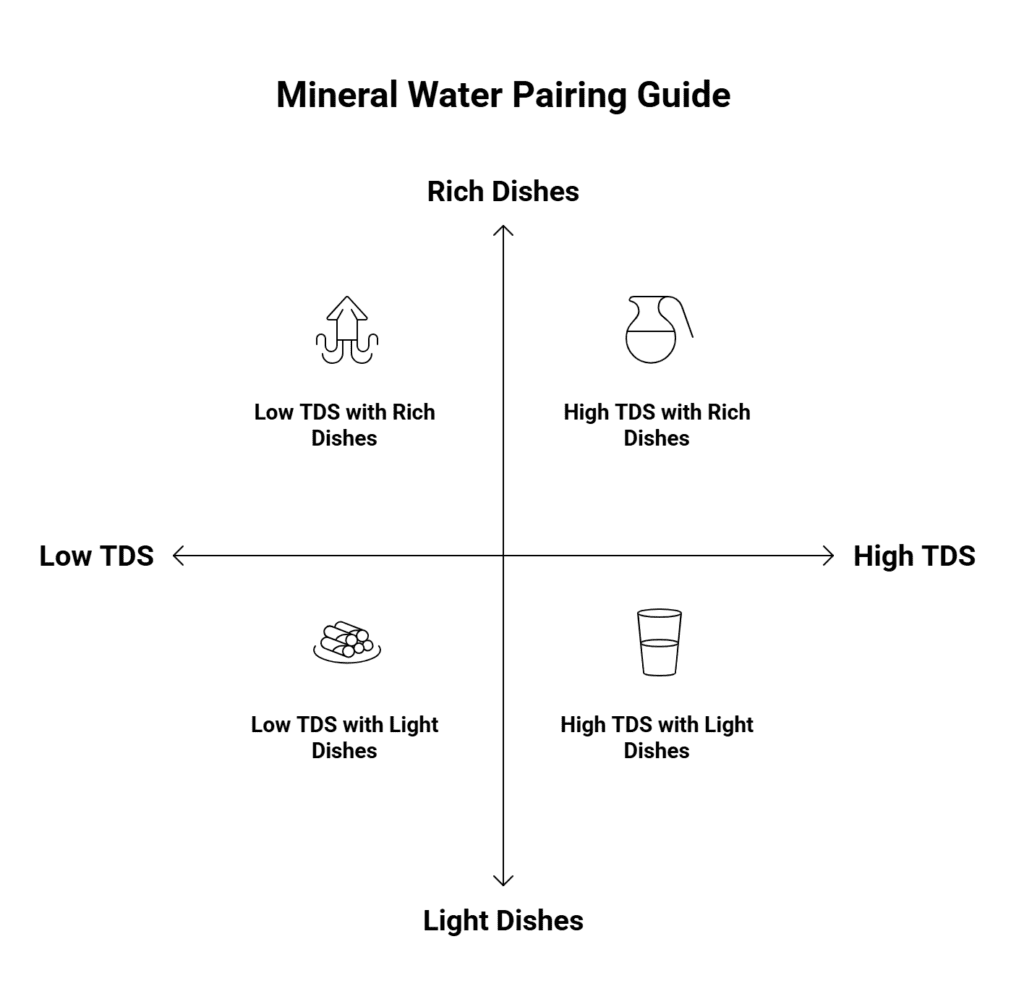
- Ask about TDS: It’s a straightforward way to gauge flavor intensity. Lower TDS is lighter; higher TDS tends to be bolder or saline.
- Think like wine pairing: Match intensity with intensity. Rich or salty dishes can handle and sometimes benefit from more mineral-driven waters.
- Mind the chill: Very cold water can hide nuance. If tasting is the goal, ask for a service temperature that doesn’t mute flavor.
- Start simple: If new to mineral waters, begin with a low TDS still option, then try a high TDS selection side by side with a salty bite to sense the contrast.
Bottom Line
La Popote’s dedicated bottled water menu is designed to bring the same attentiveness typically reserved for wine to a non-alcoholic category that’s often overlooked. It offers three stills, four sparklings, a small education in how dissolved minerals shape taste, mouthfeel, and pairing potential, all while keeping tap water freely available for anyone who wants it. Prices span from everyday to premium, with selections drawn from across Europe, and a service style meant to help diners actually taste what sets each bottle apart. For the restaurant, it’s a distinctive step in a direction many venues are exploring in their way: giving non-drinkers something intentional, curated, and, yes, delicious.








